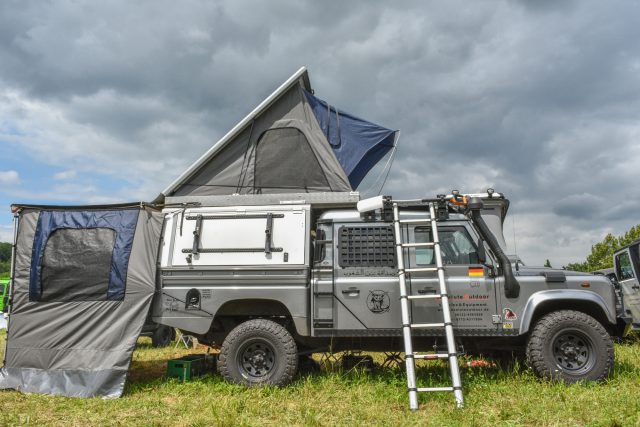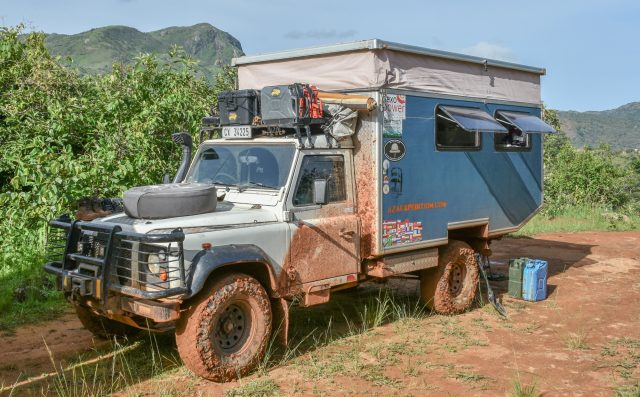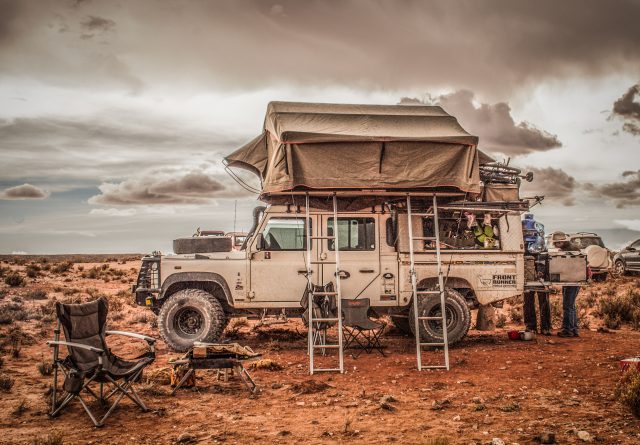Hard-side, built-on, live-in campers are all the rage these days. But are they worth the investment?
I was having a conversation with my friend John the other day. Three times a year, he tows a large off-road caravan with a V8-powered Land Cruiser to Namibia, Botswana, or Zimbabwe. I suggested that a hard-side camper such as ours might be perfect for him and his wife, but a Toyota variant, as he had owned Land Rovers for years and refuses to own one again.



“Not for me,” he responded in his Mediterranean accent. John, who is comfortably retired, explained that his style of travel does not require a live-in vehicle. He and his wife, Katia, travel to explore the transfrontier parks which bless Southern Africa. They book a campsite in advance and set up the caravan as a base for exploration. The Land Cruiser is equipped with a simple drawer system, a fridge, and an awning, all which are used to provide gear, refreshment, and shade while the couple search for lions, elephants, giraffes, leopards, and other big game. As they primarily visit well-established nature reserves, they do not need 4WD. Still, it is always a good idea to head out into Africa with a capable vehicle—you never know what nature is going to throw your way. John explained further that he does not go looking for remote 4WD trails, he does not overnight with the vehicle in urban areas, and he has no interest in long-term, low-budget overlanding. He could sell the caravan and the vehicle and replace both with newer versions when the time was right, and he could use the Land Cruiser as an everyday vehicle when not travelling.
His style of travel is quite different from ours.
We are long-term, low-budget overlanders. Initially, we travelled in old Series Land Rovers with roof tents and invested in a double cab Defender 130 before we left to travel the world. For four years, we lived as a family of four in a beautiful bloody roof tent, but we eventually realised that this journey had become a lifestyle, and we needed a live-in solution. We have overnighted in supermarket parking lots, on city side streets, in the Amazon, and across Africa. We live in our vehicle most of the year and travel across continents. We need the security which hard walls offer, and we have to be self-sufficient as we travel to both very hot and frigid climates.

Our camper vehicle suits our style of travel.
There are two significant drawbacks to a live-in, hard-side 4×4 camper: the first is that the vehicle needs to be packed up for day trips, and the second is that they are expensive. Very expensive. Yes, you can build the camper yourself, as we did, but this is a project which demands time, resources, and expertise. It looks relatively simple, but believe me, the fabrication and modification never end. There are always improvements and compromises which have to be made. Our double-cab Defender was perfect for short-term journeys (six months and less), but a family needs space and a degree of comfort if they are to remain motivated to take on the difficult road lifestyle. We needed living space, beds for four adults, and sufficient packing space for all a family needs while living in a vehicle. The camper build has cost in excess of $25,000 to date. That does not include the base vehicle, composite fibreglass panels, windows, or adhesive—materials that were supplied free of charge by Total Composites as part of a marketing deal.
A manufacturer such as Uro Camper or Tom’s can build a vehicle to your specs, but you are looking at an investment upwards of $100,000 for a new vehicle. To put that in perspective, for $20,000, you could buy a secondhand Toyota pickup, kit it out simply, and then travel the world for just over three years (at $2,000 a month) with the $80,000 you will have left in your pocket. You could then sell the Toyota for $15,000.

So, is a hard-side camper worth the investment?
Depending on your style of travel, a hard-side 4×4 camper may very well be worth the investment, particularly if you are looking for a long-term, long-distance overland vehicle. There is no other option for us—this is what works, and this is how we intend to travel for the rest of our lives. But, if you will only use the vehicle every other weekend or three times a year, your money is better spent on experiences.


